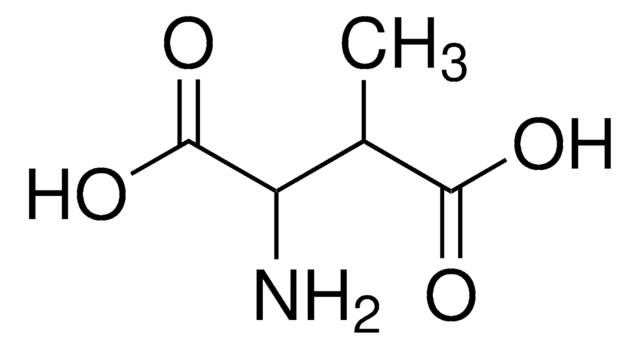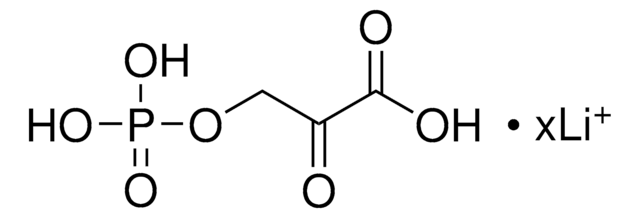06367
Sodium β-hydroxypyruvate hydrate
≥97.0% (calc. based on dry substance, NT)
Sinónimos:
β-Hydroxypyruvic acid sodium salt, 3-Hydroxy-2-oxopropionic acid sodium salt
About This Item
Productos recomendados
Análisis
≥97.0% (calc. based on dry substance, NT)
formulario
powder
impurezas
~1 mol water
aplicaciones
clinical testing
formato
neat
temp. de almacenamiento
2-8°C
cadena SMILES
OCC(C([O-])=O)=O.O.[Na+]
InChI
1S/C3H4O4.Na.H2O/c4-1-2(5)3(6)7;;/h4H,1H2,(H,6,7);;1H2/q;+1;/p-1
Clave InChI
KSEDNTCSZJLSFJ-UHFFFAOYSA-M
Categorías relacionadas
Acciones bioquímicas o fisiológicas
Código de clase de almacenamiento
11 - Combustible Solids
Clase de riesgo para el agua (WGK)
WGK 3
Punto de inflamabilidad (°F)
Not applicable
Punto de inflamabilidad (°C)
Not applicable
Equipo de protección personal
Eyeshields, Gloves, type N95 (US)
Certificados de análisis (COA)
Busque Certificados de análisis (COA) introduciendo el número de lote del producto. Los números de lote se encuentran en la etiqueta del producto después de las palabras «Lot» o «Batch»
¿Ya tiene este producto?
Encuentre la documentación para los productos que ha comprado recientemente en la Biblioteca de documentos.
Los clientes también vieron
Nuestro equipo de científicos tiene experiencia en todas las áreas de investigación: Ciencias de la vida, Ciencia de los materiales, Síntesis química, Cromatografía, Analítica y muchas otras.
Póngase en contacto con el Servicio técnico










